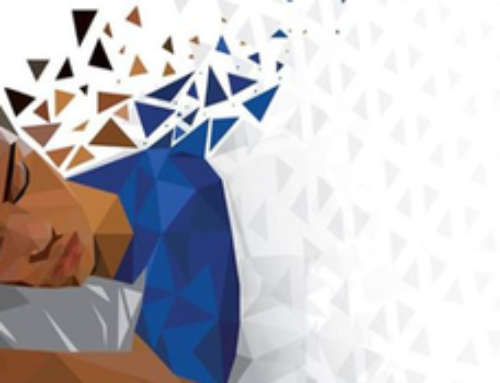By Stephanie Crowley, PhD & Charmane Eastman, PhD
Dr. Rosalind (“Roz”) Cartwright passed away on Friday January 15, 2021 shortly after her 98th birthday. Dr. Cartwright was a pioneer in the field of sleep medicine and research since its earliest days, when she was virtually the sole woman in the field.
Dr Cartwright received her Bachelor’s (1945) and Master’s degrees (1946) in Psychology from the University of Toronto. She received her PhD in Social Psychology from Cornell University in 1949. After a three-year teaching faculty appointment at Mount Holyoke College, Dr Cartwright relocated to the University of Chicago in 1951 where she worked with Dr Carl Rogers who was developing a new client-focused psychotherapy that emphasized following the feelings of the client (a departure from the popular psychoanalytic method).
She (under her maiden name Dymond) and Dr Rogers wrote a book Psychotherapy and Personality Change (1954), which detailed their careful work comparing client-centered therapy to a control group with objective outcome measures. The book was viewed as a transformative advance in the field of psychology. While at the University of Chicago, her secretary Pat was dating a medical student working nights in Nathaniel Kleitman’s lab; the medical student turned out to be Dr. Bill Dement. Dr. Cartwright often recounted the story of Pat coming in one day to tell her a new fascinating tid bit from Bill’s nights of watching sleep: “did you know that peoples’ eyes move when they are dreaming?” It wasn’t until 10 years later that Dr Cartwright would appreciate this finding as she embarked on her studies of sleep and dreaming. In 1962, Dr Cartwright started her own sleep lab at the University of Illinois College of Medicine in Chicago. Within the Department of Psychiatry, the Psychology department was in an old psychiatric ward. She writes and tells about her commandeering part of a men’s bathroom where she replaced the tubs with beds! She also installed an intercom system and the electrical shielding and wiring necessary to carry EEG, EOG, and EMG signals to a nearby control room, where she spent countless nights watching people sleep and waiting for REM sleep so that she could learn what they were thinking about upon awakening.
In 1977, Dr Cartwright moved a few blocks away to Rush University Medical Center, where she spent the rest of her career as Professor and Chairwoman of the Department of Psychology. In discussions with Rush’s president at the time, she requested a sleep disorders service with at least 5 bedrooms (4 clinical beds and 1 research bed). Of course, he didn’t know what such a service would be good for since nothing like this existed! Nevertheless, Dr Cartwright’s request was approved, and she established the first sleep disorders service in Illinois.
Dr Cartwright’s sleep research career spanned more than half a century. Her work spanned the diagnosis and treatment of Obstructive Sleep Apnea (OSA) to the nature and function of dreams. Her work showed us the importance of body position for the diagnosis and treatment of OSA and was instrumental in the development of the tongue retaining device as a treatment for OSA. Her clever “tennis ball t-shirt” (a t-shirt with a tennis ball sewn into the back) to prevent the patient from rolling on his or her back was touted as the least expensive therapy for sleep apnea. Perhaps most notable was her theory on dreaming and the scientific method that she applied to this work. She hypothesized that dreaming, particularly during REM sleep, is a way to process emotions experienced during the day. As she noted in her most recent book, The Twenty-four Hour Mind , “…sleep is a built-in physician and dreams an internal psychotherapist; that good sleep rests and restores our weary bodies and that good dreams temper our emotional responses to new experiences.” Over many years she meticulously gathered data to support her theory by studying couples who were divorcing, some of whom were also depressed. These studies, which were funded by the National Institute of Mental Health (NIMH) for more than 20 years, showed us that those who reported dreams that contained the problem (i.e., the spouse), contained affect, and drew on older associated content were able to cope better with the real-life stress occurring. The change in affect across the night also predicted better or worse depressed mood outcomes. Her elegant work in dreaming earned her the nickname “The Queen of Dreams,” an appropriate nickname bestowed upon her by Dr Ernest Hartmann as he was dressed as an Archbishop during a dreaming conference.
Dr Cartwright will be remembered for her pioneering work in sleep but will also be remembered as one of the first women in the sleep field who paved the way for many other women to follow. Around a conference table with mostly young men at her first APSS meeting at Stanford in 1964, she found her home in the sleep community. Her work and scientific approach over the years gained her recognition, including being the first woman on a NIMH study section and the first woman to receive the SRS Distinguished Scientist Award in 2002. She set the bar high and broke down barriers while also raising a family.
We end with a personal memory from Charmane:
“Dr. Cartwright used to have Christmas parties for the staff of the Sleep Center. She had a little gift for each person and a saying to go with it. For example, one clinician got a little bread basket, because he was always asking for a raise. One year my present was a little toy one-armed bandit slot machine. When you pushed down its tiny handle the wheels spun and always stopped at 3 lemons. Then it shot water at you. It was early in my grant writing career, and this was supposed to encourage me. I thought it was hilarious. I wish I still had that silly, little toy.”






